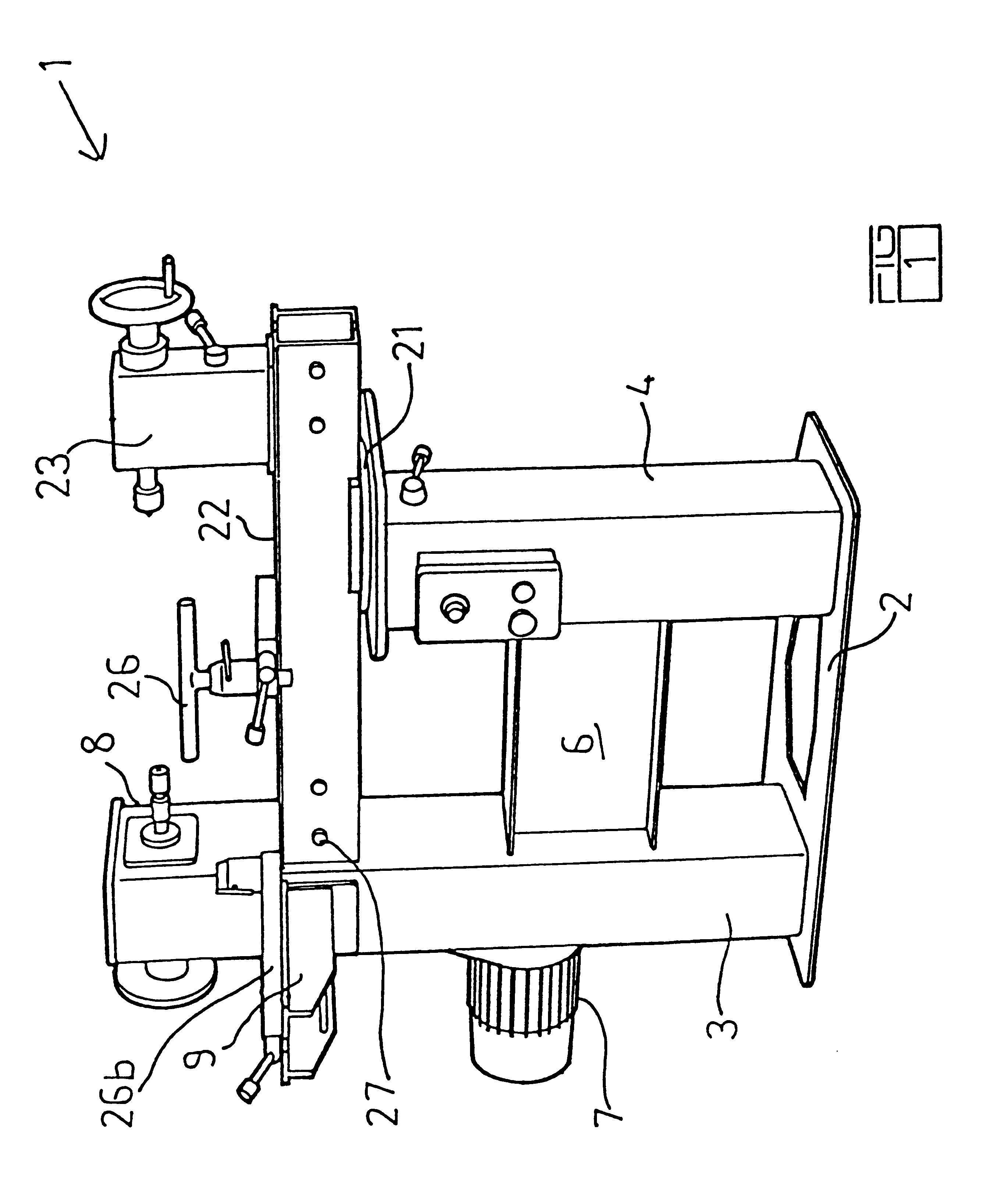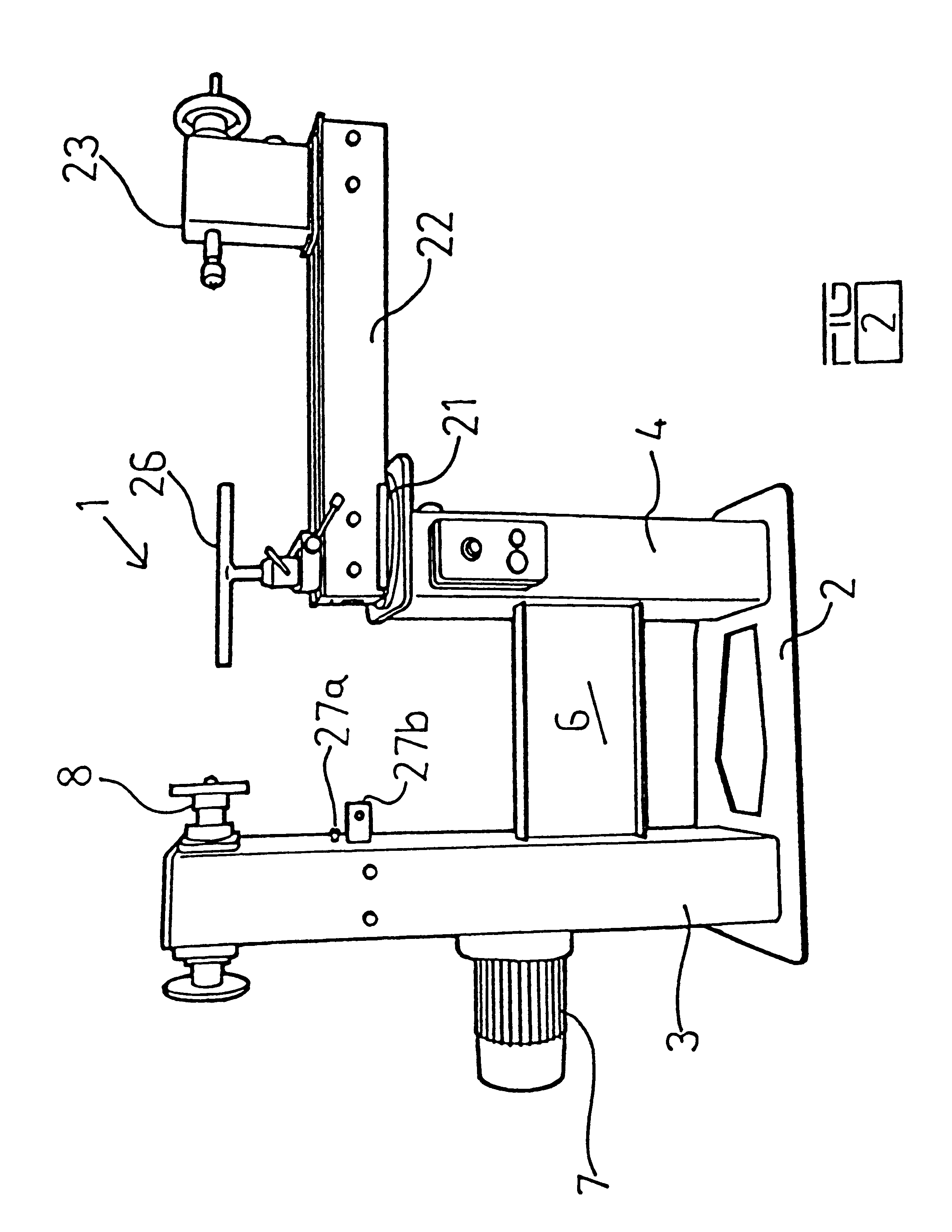Lathes
a technology of lathes and sleeves, which is applied in the direction of turning apparatuses, large fixed members, sleeve/socket joints, etc., can solve the problems of adverse interference with the vacuum hose and the attachments connected thereto, and the prior art lathes do not enable an operator to effectively and safely gain access to all surfaces of an articl
- Summary
- Abstract
- Description
- Claims
- Application Information
AI Technical Summary
Benefits of technology
Problems solved by technology
Method used
Image
Examples
Embodiment Construction
Preferably the lathe bed is manufactured in two symmetrical longitudinal halves which are bolted or welded together.
The lathe bed is preferably slidably affixed to a rotatable turntable. Preferably the lathe bed can be rotated up to 360.degree. in a horizontal plane about a vertical axis and can also be moved towards or away from the headstock. In this way larger blanks can be readily accommodated.
Preferably the lathe bed contains a centrally located groove along its length forming a track in which a tailstock and tool rest can be slidably moved or rotated therein in a horizontal plane about a vertical axis.
Preferably the tailstock is able to be slidably moved in both a forward and backward direction along the lathe bed and is rotatable about a vertical axis within the lathe bed. More preferably the tailstock can be swivelled and realigned with the headstock so as to maintain a central working axis.
In this way direct alignment along a working axis between the headstock and tailstock...
PUM
| Property | Measurement | Unit |
|---|---|---|
| right angles | aaaaa | aaaaa |
| angle | aaaaa | aaaaa |
| vacuum | aaaaa | aaaaa |
Abstract
Description
Claims
Application Information
 Login to View More
Login to View More - Generate Ideas
- Intellectual Property
- Life Sciences
- Materials
- Tech Scout
- Unparalleled Data Quality
- Higher Quality Content
- 60% Fewer Hallucinations
Browse by: Latest US Patents, China's latest patents, Technical Efficacy Thesaurus, Application Domain, Technology Topic, Popular Technical Reports.
© 2025 PatSnap. All rights reserved.Legal|Privacy policy|Modern Slavery Act Transparency Statement|Sitemap|About US| Contact US: help@patsnap.com



